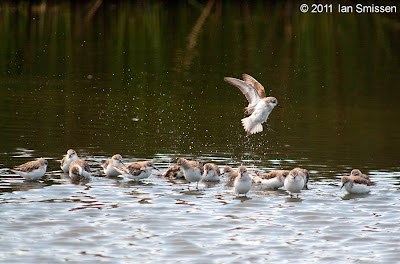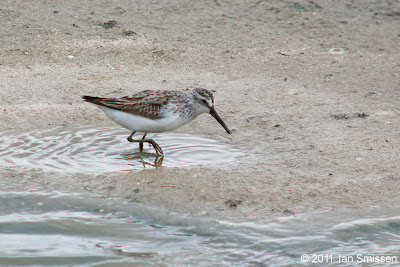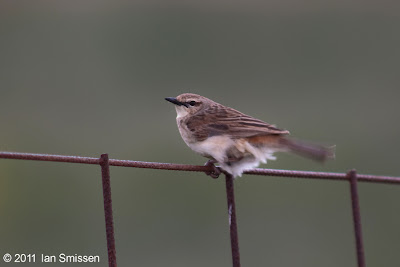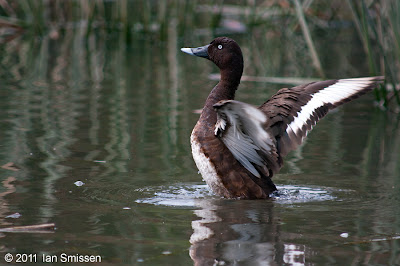I spent the afternoon at the Western Treatment Plant. The waders are back in force and waterfowl are more numerous and active than I can remember.
I was lucky enough to get to the Bird Hide as the tide was just going out. There were hundreds of birds on the mudflats at the mouth of Little River. Red-necked Stint and Curlew Sandpiper were the most common
 |
| Waders, Western Treatment Plant |
but there were also Australian Shelduck, Pacific Black Duck, Australian Pied Oystercatcher, Silver Gull, Pied Cormorant, Australian Pelican, Bar-tailed Godwit, Eastern Great Egret, Little Egret and Common Tern.
Next stop was the Conservation Ponds. On the way there I spotted a pair of Brown Falcons so stopped to see if I could get close enough for a decent photograph from the car. As I put the camera out the window, they both flew away but, unusually, one flew towards me and I managed to catch it in flight just as it went past.
 |
| Brown Falcon, Western Treatment Plant |
It landed in a tree a few hundred metres along the road so I drove slowly towards it and it stayed in the tree very cooperatively - love the 4-wheel hide :-)
 |
| Brown Falcon, Western Treatment Plant |
Highlight at the Conservation Ponds was the flock of Sharp-tailed Sandpipers feeding close to the bank.
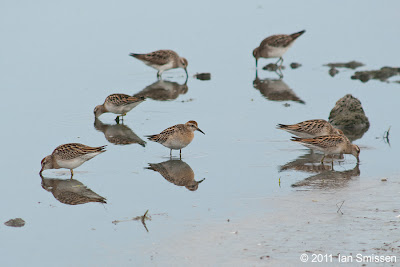 |
| Sharp-tailed Sandpiper, Western Treatment Plant |
A quick stop at the Borrow Pits to see if I could find and photograph the Banded Stilts that had been reported there earlier this week. Found them but too far away for any decent photographs. There was, however, a small flock of Black-tailed Native-hens running around (in their usual fashion) on the mud islands just near the 270S car park.
 |
| Black-tailed Native-hen, Western Treatment Plant |
Last stop was the T-Section Lagoon 4 to try and find the Spotless Crake that had so far eluded me (see Crake Hunt
Part 1 and
Part 3). This is an amazing location for waterfowl, with 8 species of Rallids seen in 30 minutes: Eurasian Coot, Dusky Moorhen, Purple Swamphen, Black-tailed Native-hen, Buff-banded Rail, Australian Spotted Crake, Baillon's Crake and (at last) Spotless Crake! Only Lewin's Rail was missing (from SE Australian Rallid species) but was reported as seen at the WTP today by others.
 |
| Spotless Crake, Western Treatment Plant |
I was also treated to a Whiskered Tern, in full breeding plumage, standing on a rock in perfect portrait pose (albeit a bit far away for a great shot but happy to record this bird that is mostly seen airborne).
 |
| Whiskered Tern, Western Treatment Plant |


















